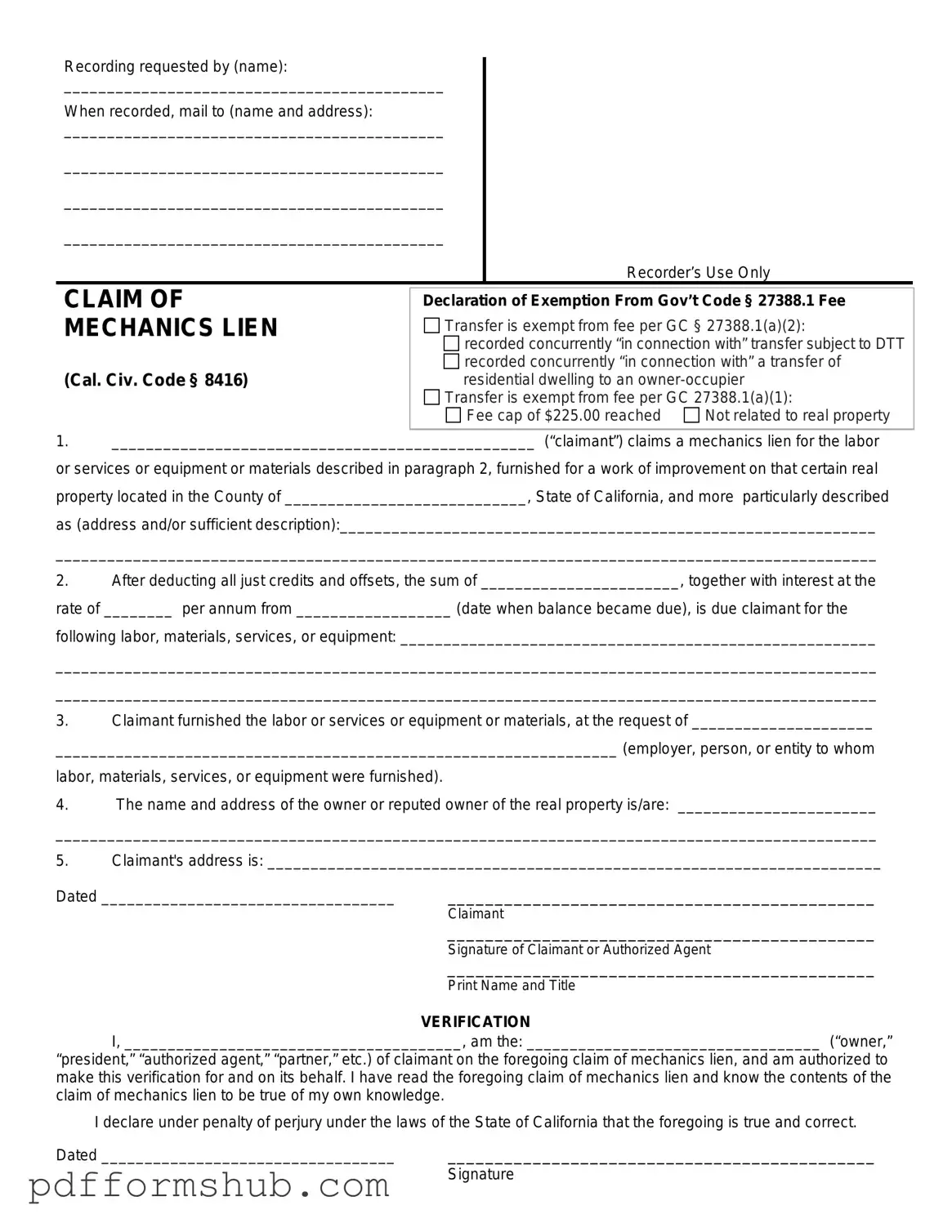When engaging in construction projects in California, understanding the Mechanics Lien form is crucial for contractors, subcontractors, and suppliers. This form serves as a legal tool that allows those who have provided labor or materials for a property to secure payment. By filing a Mechanics Lien, individuals and businesses can protect their financial interests and ensure they are compensated for their work. The form requires specific information, including the property owner's details, a description of the work performed, and the amount owed. It must be filed within a certain timeframe to be valid, and there are strict guidelines regarding its content and submission process. Additionally, the Mechanics Lien can lead to a lien on the property, which may ultimately affect the owner's ability to sell or refinance. Understanding the implications and requirements of this form can help ensure that all parties involved are aware of their rights and responsibilities, providing a layer of security in what can often be a complex and challenging industry.
